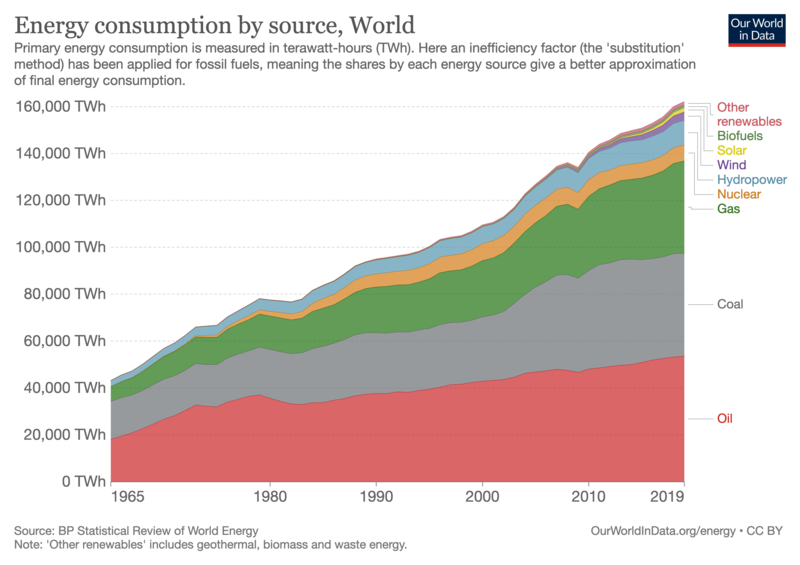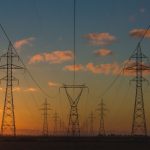Solar energy, together with other renewables, is often “sold” as a holy solution to the impact of our energy system and the CO2 emissions it causes. Nonetheless, renewables aren’t enough: focusing on energy descent and decentralisation is as, or even more important. Let’s take a closer look and understand why.
Solar: a renewable energy with many advantages
The structure of any society is largely determined by the quality and availability of the energy sources that sustain it.
In the case of modern societies, the burning of fossil fuels – namely coal, oil and gas – has allowed for human “progress” over the last few decades with the side effects we all know: the release and an exponential increase in the concentration of greenhouse gases in the atmosphere.

One of the most in-demand solutions for dealing with these polluting fossil energies is solar energy, i.e., energy production through photovoltaic solar panels.
But is solar energy a good idea?
It seems so: particularly if you’re keen on biomimicry – i.e. learning from Nature’s 4.6b years of existence, 3.5b of which have hosted Life – and see that the only form of energy used in the natural world comes from the sun.
One could easily write about the delicate and unbelievable balance of Earth: where fungi take minerals from rocks to feed plants and soil microorganisms while receiving nutrients from plants thanks to their photosynthesis.
But that’s not what is piece is about. We’re still making the case for solar energy!
And in fact, solar also seems to be a great source of energy considering that the price of solar panels has dropped sharply in recent years, facilitating its growth and widespread adoption.
Unfortunately – yes, there’s always “but” – solar energy becomes less attractive when we think that the sun does not always shine, especially in cloudier countries. This is why we haven’t completely abandoned fossil fuel-based power plants which, when called to work, cause fluctuations in the energy market and increase energy bills at the end of the month.
The hidden cost of solar panels and solar energy
Furthermore, the average efficiency of a solar panel is only around 20%-25% and the need to take a long area that needs to be prepared (sometimes leading to deforestation and loss of biodiversity) are other cons of solar energy. .
And let’s not forget how difficult it is to conserve this energy to use later: it requires the use of lithium batteries that are very difficult to recycle and which, like solar panels, are made up of several rare minerals.
Also remember that these minerals involve mining activities which mean more deforestation, land use, tons of (contaminated) water that is often discharged irresponsibly and pollutes ecosystems… Not to mention the heavy machinery, excavators and the fuel needed to operate them…
Out of curiosity, it might be interesting to explore some of the impacts associated with the production of an iPhone in a video entitled: 4 reasons why the Planet cannot produce more iPhones.
Thus, we are able to realise that, despite being fundamental for decarbonisation, solar energy and electrification are not perfect and have a wide range of implications.
In fact, although the share of renewable energies – such as solar, wind, geothermal, hydro, biomass – is increasing on a global scale, the overall share of pollution from the energy sector has also been increasing.
The cause?
Our ever growing energy consumption and why renewables aren’t enough
Energy consumption is increasing at a faster rate than we are decarbonising energy – that’s why.
Hence the importance of avoiding generating energy firsthand: the biggest reduction in our energy impact needs to come from reducing the energy we need. This is the number one thing we need to have in mind when it comes to reducing the impact of our energy consumption.
Only afterwards we should focus on using – and producing – energy efficiently.
This dichotomy between the right direction and an impact that is not desired has only one solution: that we stop believing in technological fixes (current or yet to be discovered) that will solve environmental problems while believing we won’t have to change anything in the way we live.
No matter how important present and future technological solutions are or can be (and they are and will further be!) we have to start thinking that we need to adapt our lifestyles – while the private and public sectors do their part as well.
Mollison and Holmgren, the “founders” of the permaculture movement, were among the first to think/plan how to reduce energy use using a whole systems approach.
Among many suggestions around passive systems – i.e. designs that require less energy thanks to their design – planting trees to block cold winds or carefully considering the solar orientation of a house are among the most frequent (see video below from the Oregon State University Ecampus).
Still within this energy issue, you might also like to explore the concept of EROI (Energy Return On Investment), related to the amount of energy society needs to sustain itself. But what does this really mean?
It means that if we look deeper, we realise that the efficiency of oil extraction over time is decreasing – as is its EROI – and that our society’s energy hunger will have to slow down, even with renewable energies.
Consuming less and consuming each other’s energy
Last but not least, the theme of energy decentralisation, and not just the transition to renewable energy systems, is also a very relevant one for the energy transition journey.
Thus, it is important that we move from centralised, capital intensive mega projects to decentralised and smart small-scale energy production projects.
Across the world, centralised energy systems based on fossil fuels have been supported by large capital projects through state investments and loans (although many have private equity in the meantime).
This has led to higher energy prices, to a certain misalignment with the SDG (sustainable development goals) and exposing countries to EROI (which is declining) risks to support complex societies.
Moreover, centralised, ageing and outdated energy infrastructures are sometimes not maintained by governments, which in some countries ends up causing continuous blackouts with crippling socio-economic consequences.
Ultimately, centralised energy systems are more prone to political manoeuvres and schemes. How about decentralised energy systems?
Decentralised energy production
Decentralized power systems are more resilient in the long run.
Why?
Because they have greater network connectivity between participants (energy producers), thus strengthening connections and better supporting grid gaps while enjoying public-private ownership.
Depending on the legislation in force, decentralised energy systems rely on small renewable energy producers that are connected through a decentralised grid to end-users who can buy and also produce energy and sell it back to the grid or the local micro-grid.
This means one can simultaneously be an energy producer and a consumer.
The recent (April 2021) documentary from Patagonia exposes how decentralised energy systems will be important for an energy transition and explains why we should bet on them.
Decentralised energy production: meaning
What are decentralised energy systems exactly? As the name suggests, they are systems through which energy is produced off the main (and centralised in a couple of large powerplants) electricity grid.
Moreover, it also commonly refers to the energy that is produced close to where it will be used, rather than in a distant power plant. As briefly mentioned above, decentralised energy stems can increase the security of supply, reduce transmission losses and lower carbon emissions – especially in the case of renewables.
Examples of decentralised energy systems include combined heat and power (aka cogeneration or CHP), waste plants, burning biomass, solar and energy or geothermal. They can serve a whole community (e.g. an ecovillage), a building (e.g. a condominium) or even a village.
Renewables and the energy transition: less is more
No matter the source, producing energy, just like everything else we do, has an impact on our planet. Be it photovoltaic solar panels, wind turbines or hydro – particularly when they reach the end of their lifecycle and we are unable to close the loop materials and move towards a more circular economy.
We’re often “sold” false promises of a greener future that depends on changing our energy production grid away from fossil fuels and towards renewables.
And rightly so.
What we also need to be told is that even these energies have huge environmental costs and as a result, they are not enough. We also need to carefully analyse where we’re spending the energy we’re consuming and prioritise its use.
We need to shift away from a careless consumption of energy – one which ignores producing it has huge costs – towards a mindset (which is just as important as finding usage/privilege models) where we acknowledge that just like in the natural world, energy is sacred and produced in a decentralised way.
We must use it wisely.
[Photo by Matthew Henry on Unsplash]

